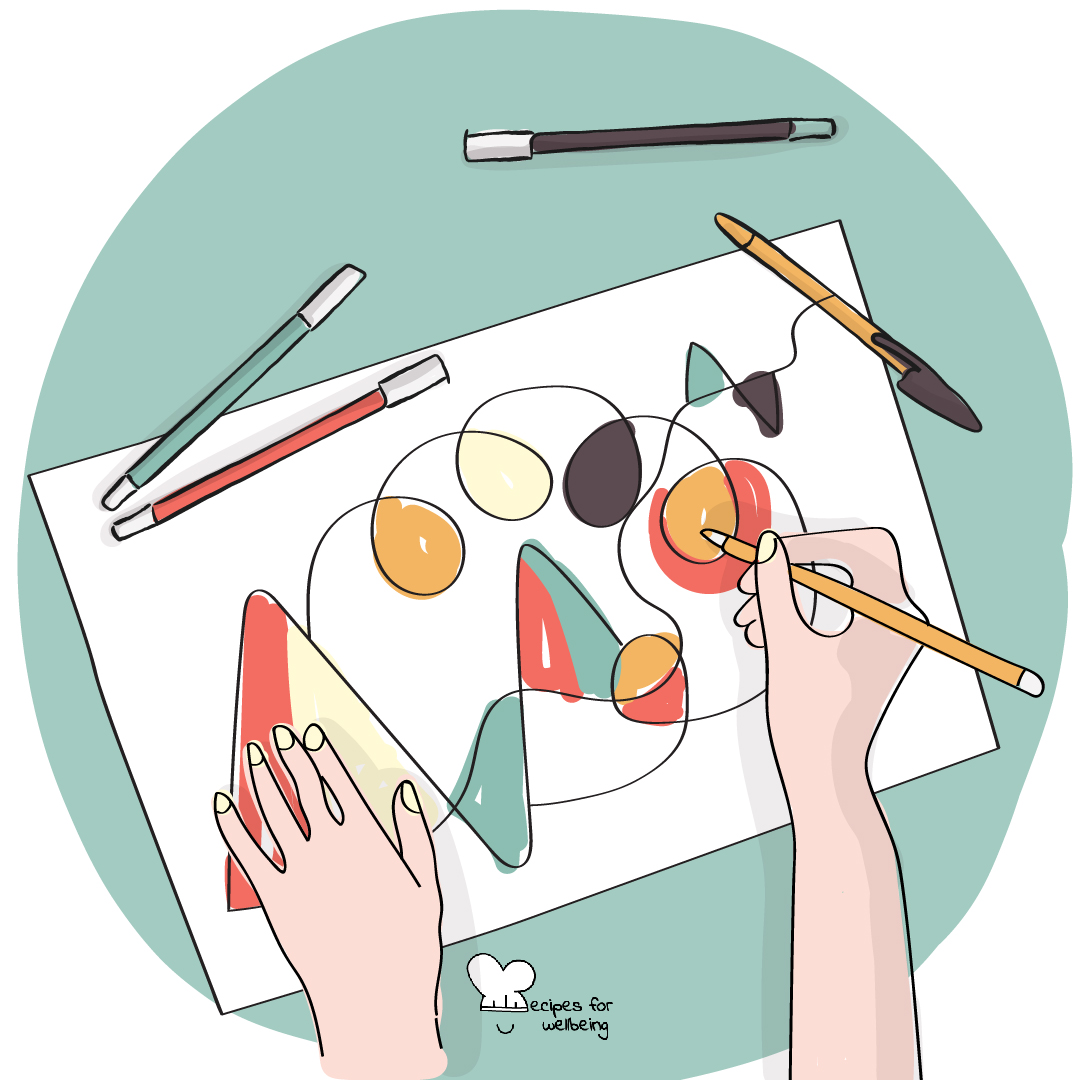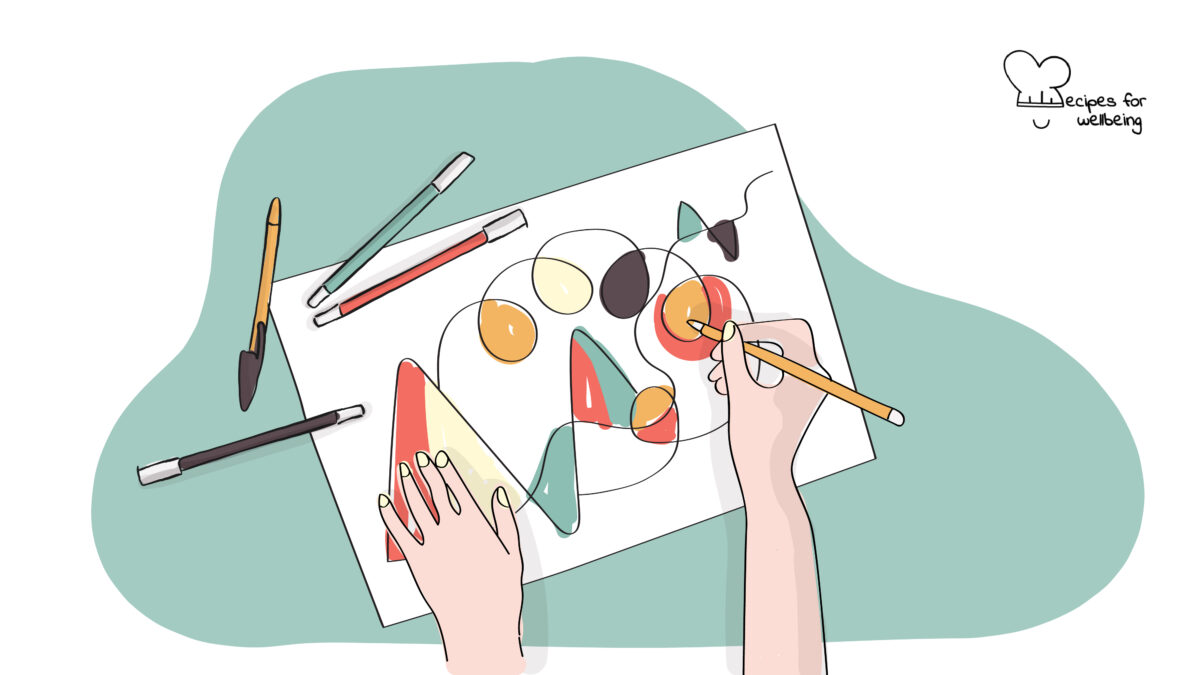
Colourful confusions
Colour is a power which directly influences the soul. ―Wassily Kandinsky
👥 Serves: 1 person, 11-25 people, 2-10 people
🎚 Difficulty: Medium
⏳ Total time: 11-30 minutes
🥣 Ingredients: A4 sheet of paper (1 per participant), a few sketch pens and crayons, 1 adult facilitator (for younger children)
🤓 Wholebeing Domains: Awareness, Discomfortability, Liberatory Learning, Positive Emotion
💪 Wholebeing Skills: Acceptance, Breathing, Clarity, Creativity, Reflection, Reframing, Relief, Self-regulation, Stress management

Colourful confusions
📝 Description
Awareness and acceptance of difficult emotions through drawing.
The COVID-19 pandemic has forced many children and young people indoors, preventing them from playing outside. This is causing many physical and emotional issues, so it is important to find alternative solutions to help them continue to play at home, be fit, and cope with the emotional burden brought on by the pandemic.
The following recipe has been adapted from “The Home Activity Kit” to help children and young people engage in everyday life, kindly shared with us by Dream a Dream. This activity has been developed considering the pandemic situation so it can be conducted safely from home and is most suitable for young people between the ages of 8 and 14. We recommend having an adult to facilitate it but teenagers can experience it without adult supervision.
Check out more wellbeing recipes for children and young people adapted from Dream a Dream’s kits: Balance the ball, Draw it in your own style, Portraiture, Solo balloon volleyball, and Tree talk.
👣 Steps
Step 1 – Warm-up (5’)
Sit in a comfortable position and close your eyes. Focus all your attention on your breath, feeling the air entering your nose and leaving your mouth. Each time you inhale, count backwards starting with 10, and then 9, 8, 7, and so on. When you arrive at 1, start again from 10. If you get distracted and lose your count, don’t worry! Simply starts again from 10.
Step 2 – Draw (2’)
Take your sheet of paper and a pencil and sit in a comfortable place. Start by placing a dot in the middle of your sheet. Then close your eyes and from this dot, start drawing a line (try not to lift your pencil off the sheet of paper). It doesn’t matter what it looks like (your eyes are closed!). While drawing the lines, try to remember the times when you experienced confusions.
Step 3 – Observe (3’)
After a couple of minutes, or whenever you realise you are done representing your confusions by drawing the lines, open your eyes and observe what is on the paper. Try to relate the lines to your thoughts and emotions that you encountered that led to these confusions.
Step 4 – Colour (15’)
Now take your crayons (or coloured pens/markers) and colour in the different parts of your drawing. While filling the colours, name each colour with the names of different emotions, for instance, red for love, orange for anger, and so on. Start to notice how you are colouring your confusions in life with different emotions.
Step 5 – Outline (2’)
After you are done with the colouring, outline the borders with a black sketch pen. Notice how each emotion and experience (including confusions and problems) is important in your life to make it colourful and beautiful just like the drawing you created.

